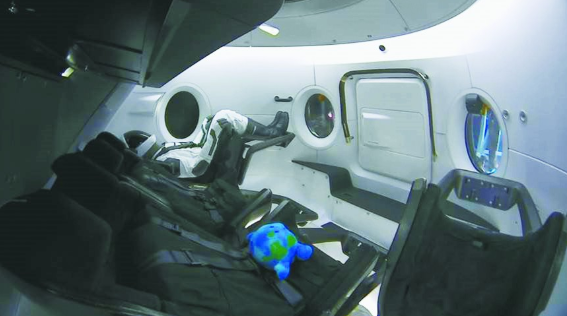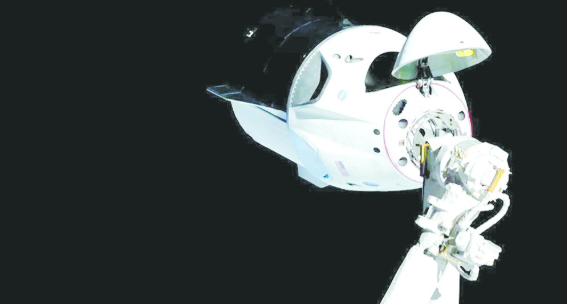
Manned version of the dragon spacecraft docking space station
2019-03-06
The US "Space" website said on the 3rd that the manned version of the "Dragon" spacecraft successfully autonomously docked with the International Space Station operating at a height of 400 kilometers at 5:51 pm on the 3rd. Such operations are indeed strange to the US spacecraft. In recent years, the cargo version of the "Dragon" spacecraft that has come to the International Space Station has to rely on the astronauts to manipulate the robotic arm to capture and then carefully dock. American astronaut Anne McLean sent a congratulatory message on the space station: "The docking was successful and congratulations to all the teams involved in the project."
At 2:49 am on March 2, US Eastern Time, SpaceX used the "Falcon 9" launch vehicle at the Kennedy Space Center in Florida for the first launch of the manned "Dragon" spacecraft. William Gesdenmeier, NASA's deputy director of manned space operations, said the launch marked a "key first step" for US spacecraft to send astronauts into space.
As a technical verification flight, this "Dragon" spacecraft did not really carry astronauts, but carried an astronaut model. SpaceX Vice President Konigsman said that all the equipment on the "Dragon" spacecraft complies with the standards of manned flight, including pressure, sound, vibration, temperature, radiation monitors, and the spacecraft is also loaded with 400 pounds (181 kg). The supply is provided to astronauts on the International Space Station.

Let the long-awaited manned spaceship of the United States be "a lot of fate." Since the US space shuttle retired in 2011, US astronauts can only count on Russia's "Alliance" spacecraft. In particular, in recent years, Russia has continuously raised the price of “space tickets” (the latest “ship ticket” price is US$81 million), and it has made it difficult for the United States, which is self-proclaimed “space power”, to “near the neck” of its astronauts.
As early as 2014, NASA signed a contract with SpaceX and Boeing to develop a new spacecraft that transports astronauts to and from the International Space Station. SpaceX received $2.6 billion and Boeing received $4.2 billion. However, both SpaceX and Boeing have indicated that they are unable to complete the first verification flight in 2017 as planned. The progress of the project was dragged on until the beginning of this year. NASA also announced that the manned "Dragon" spacecraft will make its first flight in February, but the first flight time was changed to March 2. The first test flight time for Boeing's "Starcraft" spacecraft was no earlier than April this year.
The "Space" website said that the successful docking with the International Space Station does not mean the successful conclusion of the space mission of the "Dragon" spacecraft. After five days in space, it will return to Earth, and the high temperature burning as it traverses the atmosphere may be the biggest test it faces. SpaceX President Musk said that the manned version of the "Dragon" spacecraft redesigned the outer casing and parachute system. "Although they performed very well in computer simulations, they have not experienced actual tests." If all goes well, another new "Dragon" spacecraft will officially carry two American astronauts to the International Space Station in July this year.

The BBC website said on the 3rd that for SpaceX President Musk, the manned version of the "Dragon" spacecraft will not only free NASA from dependence on Russian spacecraft, but also the first step in opening space travel to commercial customers. According to reports, unlike the narrow and crowded environment of traditional spacecraft, the manned version of the "Dragon" spacecraft has a much larger internal space and is equipped with advanced hardware and software, including a large touch interface that is full of technology rather than complicated. dash board. Mask claims that this will greatly increase the automation of the spacecraft and reduce the cost of learning for astronauts. "In most missions, astronauts can throw heavy manipulators aside and concentrate operations on the touch screen. Keep only the minimum physical buttons to deal with extreme situations."
According to Musk's plan, the manned version of the "Dragon" spacecraft was designed from the ground up to take into account the needs of future space travel. It can accommodate up to seven occupants and is equipped with an advanced environmental control and life support system to provide a comfortable and safe environment for the occupants. The occupants can sit on the seats made of the finest carbon fiber and Alcantara fabrics and enjoy the view of the space through the windows. In addition, the manned version of the "Dragon" spacecraft can be reused, which also significantly reduces the cost of space travel. SpaceX is also planning a larger spacecraft, including a "starship" that can accommodate 100 passengers, and will be used to manned to the Mars program.
